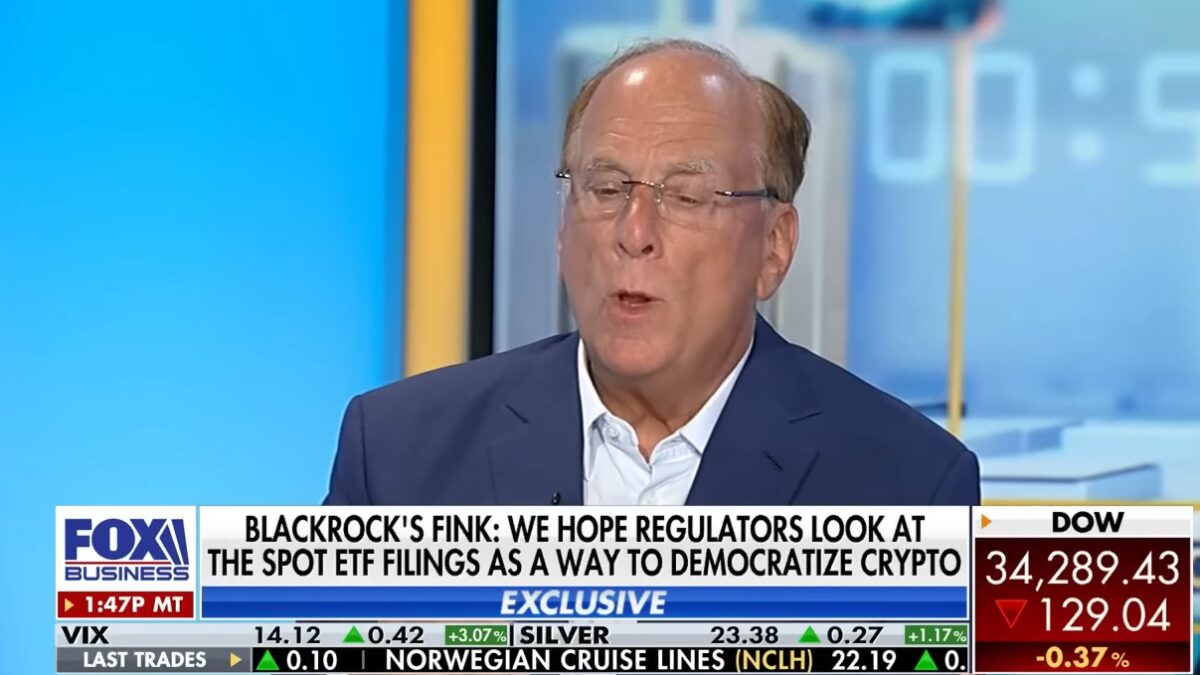
If you are a public employee or a retiree, you should be very concerned because new data shows public pension funds that let leftist policies drive their investment decisions, a.k.a. socially responsible investing, have been consistently underperforming their private peers and the general stock markets.
Socially responsible investing (SRI), meaning only investing in companies with “ethical” practices, is not an entirely new concept. Public pension funds have been leading in this since the 1970s. For example, many pulled their investments from South Africa in the ‘70s, aiming to protest that country’s apartheid system.
In the last two decades, the SRI movement has shifted its focus to domestic issues. Activists and politicians on the left have pushed public pension funds to use the power of the money under their care to force social changes they desire.
Many pension funds answered their calls with actions, screening companies based on environmental, social, and governance (ESG) criteria: “Environmental criteria consider how a company performs as a steward of nature. Social criteria examine how it manages relationships with employees, suppliers, customers, and the communities where it operates. Governance deals with a company’s leadership, executive pay, audits, internal controls, and shareholder rights.” Companies that fail to meet the ESG criteria would be dropped from the investment portfolio and future investment in similar companies prohibited.
Losing Billions on Virtue Signaling
For example, the $366 billion California Public Employees’ Retirement System (CalPERs) divested from tobacco companies in 2000. In 2013, it sold stocks of two gun manufacturers, Smith and Wesson Holding Corp. and Sturm, Ruger, and Co. In 2015, California Gov. Jerry Brown Jr. signed into law a bill requiring CalPERs and the California State Teachers’ Retirement System to divest from coal companies by July 1, 2017. After the Parkland school shooting, New Jersey’s pension fund announced that it sold its $1.9 million stake in a leading gun manufacturer.
Last year, the $25.5 billion San Francisco Employees’ Retirement System (SFERS) announced it would divest from five fossil fuel companies “if the corporations don’t agree to reduce oil and gas reserves and transform their business model to address climate change.” More progressive politicians called on their state and local public pension funds to jump on the ESG bandwagon.
But is it prudent to let leftist policies drive investment decisions? CalPERs’ general investment consultant reported last year that the pension fund lost $3.58 billion in investment gains by divesting from tobacco stocks, or about 1 percent of its assets as of June 30, 2018. Given that CalPERs faces an estimated unfunded liability of $139 billion, the loss of a good investment opportunity only exacerbates its funding shortfalls. Unfortunately, CalPERs isn’t the only public pension fund that paid a dear price for virtual signaling.
Alicia H. Munnell and Anqi Chen, two professors from the Center for Retirement Research at Boston College, published a study that analyzes the performances of public pension funds with divestment policies to meet ESG goals. The result is not promising. Their analysis shows that the average annual returns of plans in states with divestment requirements are estimated to be 40 basis points lower than plans in states without such requirements, which translates to billions in loss of investment returns.
It also shows that when comparing unrestricted mutual funds like those run by mutual fund giant Vanguard to ESG mutual funds, Vanguard funds outperform “by a considerable margin.” The two professors explain that “Part of the reason is that the fees in the ESG funds are roughly 100 basis points higher than their Vanguard counterparts, which may reflect the additional resources required to perform the screening (for ‘socially responsible’ companies).” So public employees who are saving for retirement are paying more for limited options with inferior performance.
The Politics of Pension Funding
This issue hasn’t got sufficient attention in the past because, unlike their private counterparts, public pension funds are not subject to the strict Employee Retirement Income Security Act (ERISA). ERISA subjects anyone who administers, manages, or advises a retirement plan to fiduciary responsibilities, which means running the plan “solely in the interest of participants and beneficiaries and for the exclusive purpose of providing benefits and paying plan expenses.”
In other words, private pensions must invest only for the financial benefit of participating employees, not for advancing any political positions or making those in charge of the plans feel good about themselves. Those who do not meet their fiduciary responsibilities are legally liable under ERISA.
Since ERISA doesn’t apply to public pensions, those who manage these funds have gotten away with prioritizing their politics over prudent investment decisions, with approval from activists and politicians on the left. But reality is catching up with them. There is a looming pension crisis in this country.
Pew Trust research shows only 72 percent of state pension liabilities are funded, and the estimated funding gap was at $1.1 trillion as of 2015. However, many believe this was a lowball estimate because it was based on an overly optimistic 7-8 percent rate of return assumption. In reality, even Pew’s research shows the median overall rate of returns for public pension funds was at only 3.6 percent.
Based on a more realistic rate of return assumption, the American Legislative Exchange Council estimates that the average state pension plan is funded at 35 percent and the U.S. unfunded public pension liability is about $5.96 trillion, which is equivalent to $18,300 for every U.S. resident. This is not only devastating for public employees but also for all taxpayers who are on the hook to bail these pension funds out.
Say Goodbye to Future Government Services
This massive funding gap will become everyone’s problem. It is already crowding out state and local investments in areas such as education, health care, and infrastructure. For example, a Bank of America analysis shows, “For every $1 billion of additional government pension-fund contributions, real gross state and local government investment falls by $2.5 billion.” Thus, local governments are often forced to choose between filling holes in their pensions or fixing the potholes in the streets.
We all know that eventually state and local governments have to either raise taxes or cut retirement benefits they promised to public employees in order to address this huge unfunded liability gap. However, neither is a popular move. Don’t expect politicians who are concerned about their political future to do anything necessary but unpopular.
That explains why more of them are now paying attention to pension funds’ investment rates of return, hoping increasing the rate of return will narrow the funding gap so they don’t have to make any difficult choices. They will have a rude awakening: to increase the actual rate of return, public pension funds can’t afford not to invest in companies that generate impressive growth and profits whether by making guns or delivering fossil fuels.
You Can’t Divest from Reality
Even the most politicized of pension funds realize now that they can’t divest from reality. The Wall Street Journal reports this week that CalPERs, the leader of “socially responsible” investing, is having second thoughts on this policy given the dismal return. Its own CEO, Marcie Frost, admits, “Divestment limits our investment options. With a targeted return of 7%, we need access to all potential investments across all asset classes. Divesting does the exact opposite—it shrinks the investment universe.”
After the Parkland shooting, CalPERs’s board chose not to divest more of their existing investment in gun manufacturers. It also decided to reevaluate all of its ESG-driven divestment policies by 2021. Some other public pensions are following suit.
The board of Seattle City Employees’ Retirement System decided not to divest $2.5 billion from fossil fuel companies. The New York City police pension board also resisted Mayor Bill de Blasio and Comptroller Scott Stringer’s call to divest from fossil-fuel companies. However, some public pension funds are still pursuing ESG goals, either on their own initiative or bowing to the pressures from progressive politicians and activists.
Managing someone’s retirement is a tremendous responsibility. Pension funds are not the right vehicles to pursue ESG goals. Even though public pensions are not subject to ERISA, their goal should still be identifying and investing in companies with the best long-term financial returns at acceptable risks in order to provide public employees, including teachers, fire fighters, and police with financial security in their old age.
Therefore, it is simply not prudent for pension funds to let leftist policies drive their investment decisions. Public-sector employees and taxpayers should examine their state and local public pension investments and demand these funds not play virtue signaling with their money.









